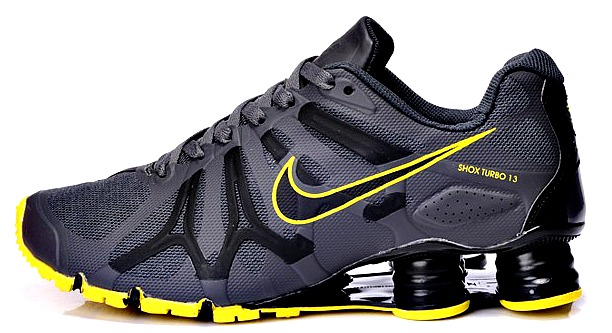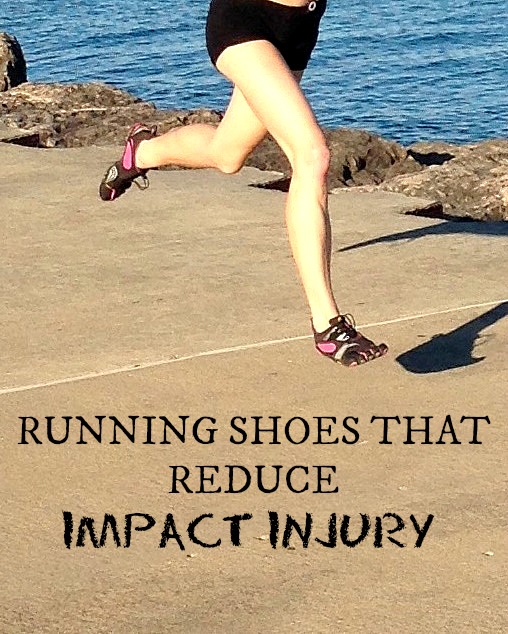One study found that runners reflexively reduced impact when shoe cushioning deteriorated, suggesting that we posses the capability of avoiding impact injury by landing lighter in the absence of protective materials of a running shoe.
Running Shoes that Reduce Impact Injury
The central nervous system allows us to cope masterfully with impact during running. For instance, pure minimalist footwear or running barefoot heightens plantar sensations which trigger protective reflexes, similar to a knee-jerk reaction, that dominate impact moderating behavior.
Conversely, cushioned running shoes are an incompetent source of impact protection since running barefoot with a forefoot strike significantly reduces impact better than any cushioned shoe. Therefore, it appears that in cushioned running shoes is when our reflexes are most often inadequate.
Tellingly, Liang and Chiu found that during material testing on the standard running shoe (Nike Shox), impact peak forces significantly increased with running distance. It therefore seems that it doesn’t take long for mileage to affect the cushioned materials of a shoe.

Furthermore, the researchers found that after 300 km, the cushioning abilities of the shoe failed, but the runners were able to reduce impact energies by accommodating themselves to the material characteristics of the shoe.
When the cushioned material of a shoe deteriorates, runners seem to make unconscious reactions to higher impact exposure. The result, the proprioceptors provide reflexive ammunition aiding in softer landings, whereas thick shoe cushioning undermines this instinctual behavior.
The Take Home Message
Thick, cushioned running shoes act as a biomechanical diversion, drawing our attention away from the task of assessing proper foot strike and toward the habit of landing impulsively. Nevertheless, these results suggest that thick, shoe cushioning actively inhibits plantar information that is important to understanding footfall intensities at hand.
More From Run Forefoot:
- How to Get Better Balance for Running
- Is Treadmill Running the Same?
- Must Have Shoes for Forefoot Striking
- Popular Energy Gels for Runners
- 11 Places to Find Vibram FiveFingers
References:
Liang JL and Chiu HT. Cushioning of the running shoes after long-terms use. International Symposium on Biomechanics in Sports: Conference Proceedings Archive, 2010;28(1):4
Bretta Riches
BSc Neurobiology; MSc Biomechanics candidate, ultra minimalist runner & founder of RunForefoot. I was a heel striker, always injured. I was inspired by the great Tirunesh Dibaba to try forefoot running. Now, I'm injury free. This is why I launched Run Forefoot, to advocate the health & performance benefits of forefoot running and to raise awareness on the dangers of heel striking, because the world needs to know.
Latest posts by Bretta Riches (see all)
- Can You Run In Barefoot Shoes? Yes, But DON’T Heel Strike! - 21/07/2024
- Why Cushioned Running Shoes Are Really Bad for Your Feet - 19/07/2024
- Do Cushioned Running Shoes Cause Injuries? - 17/07/2024


Leave a Reply